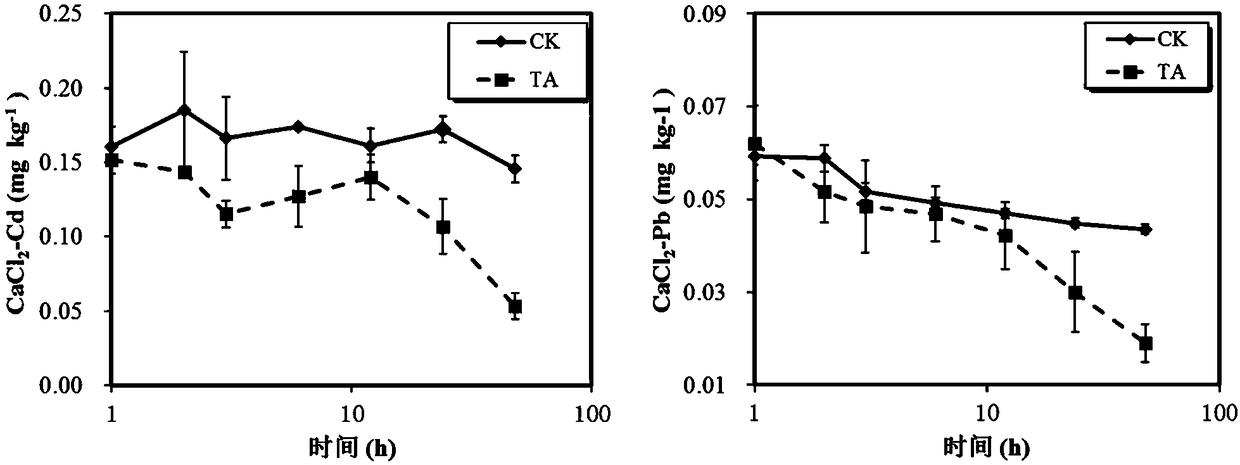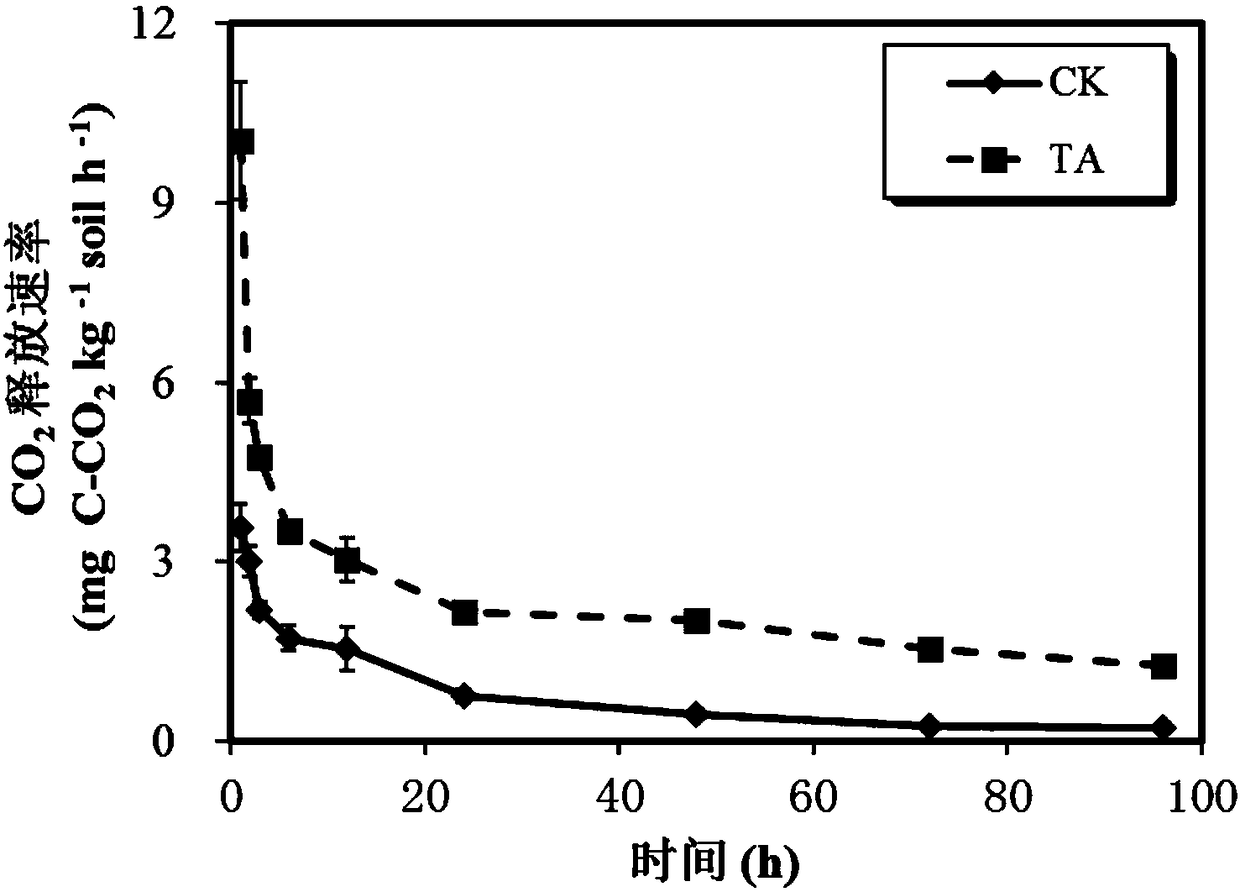Method for rapidly passivating soil cadmium-lead active components by using glycine
A glycine and soil technology, applied in chemical instruments and methods, restoration of polluted soil, soil conditioning materials, etc., can solve the problems of secondary pollution of soil, high cost of cadmium and lead soil, etc., and achieve environmental friendliness, stable reaction, and Tend to the effect
- Summary
- Abstract
- Description
- Claims
- Application Information
AI Technical Summary
Problems solved by technology
Method used
Image
Examples
Embodiment 1
[0036] Glycine (structure such as figure 1 Shown, purchased from Aladdin Reagent Company) after being prepared as a glycine solution, added to the soil that has been compounded by Cd and Pb pollution. The physical and chemical properties of the tested soils are listed in Table 1.
[0037] Table 1 Basic physical and chemical properties of the tested soil
[0038]
[0039] Investigate the rapid (3h) passivation of cadmium and lead in typical polluted farmland soil by adding amino acid.
[0040] Two treatment groups, CK (control) and TA (glycine), were respectively set up, and each treatment had 12 repetitions. Take by weighing the fresh soil for testing that is equivalent to air-dried soil weight 30g (the soil for testing is sampled from the plow layer soil with a thickness of 20cm), and put it into a 100mL polytetrafluoroethylene beaker. Match the concentration of glycine to 750mg N kg -1 Add soil, and use deionized water to adjust to 60% of the maximum field water holdi...
Embodiment 2
[0045] This example investigates the passivation degree of glycine addition on Cd and Pb compound pollution in typical farmland soil.
[0046] Select 3 repetitions in the two treatment groups of CK (contrast) and TA (glycine) involved in Example 1, and carry out sampling and determination of effective Cd and Pb content respectively at 6 and 12 hours after the start of the experiment, and other operating steps are implemented with example 1.
[0047] The results are shown in Table 3, figure 2 As shown, after adding glycine for 6 and 12 hours, CaCl 2-Cd decreased by 16%, 27%, respectively, CaCl 2 -Pb was reduced by 25%, 32%, respectively.
[0048] The passivation effect of table 3 glycine to polluted soil after treatment
[0049]
Embodiment 3
[0051] This example further examines the passivation degree of the glycine addition involved in Example 1 on the combined pollution of Cd and Pb in typical farmland soil.
[0052] Select 3 repetitions in the two treatment groups of CK (control) and TA (glycine) involved in Example 1, and carry out sampling and determination of effective Cd and Pb contents 24 and 48 hours after the start of the experiment respectively.
[0053] The results are shown in Table 4, figure 2 As shown, CaCl 2 -Cd was reduced by 30%, 65%, CaCl 2 -Pb was reduced by 52%, 70%, respectively.
[0054] The passivation effect of table 4 glycine to polluted soil after treatment
[0055]
PUM
 Login to View More
Login to View More Abstract
Description
Claims
Application Information
 Login to View More
Login to View More - R&D
- Intellectual Property
- Life Sciences
- Materials
- Tech Scout
- Unparalleled Data Quality
- Higher Quality Content
- 60% Fewer Hallucinations
Browse by: Latest US Patents, China's latest patents, Technical Efficacy Thesaurus, Application Domain, Technology Topic, Popular Technical Reports.
© 2025 PatSnap. All rights reserved.Legal|Privacy policy|Modern Slavery Act Transparency Statement|Sitemap|About US| Contact US: help@patsnap.com



